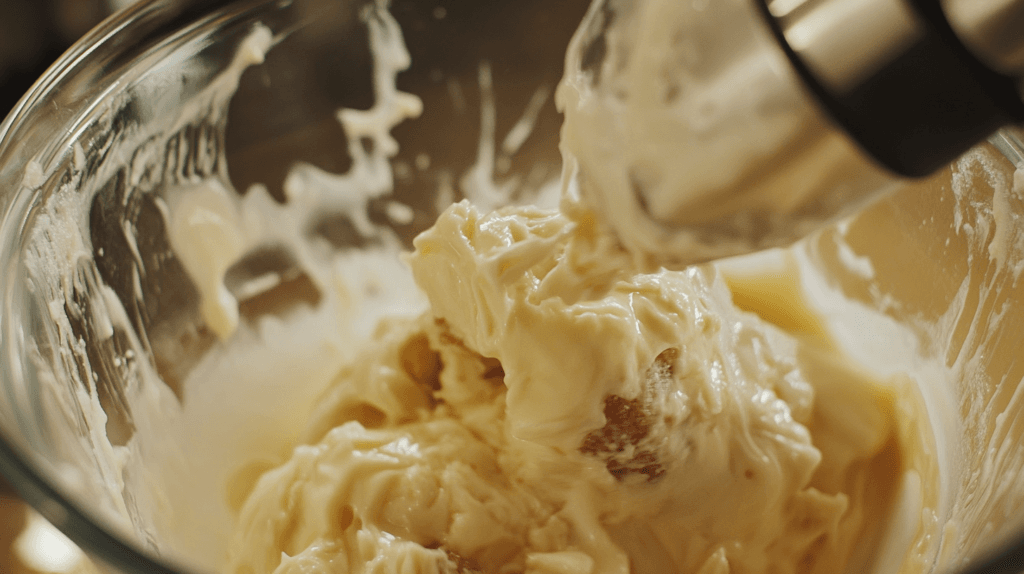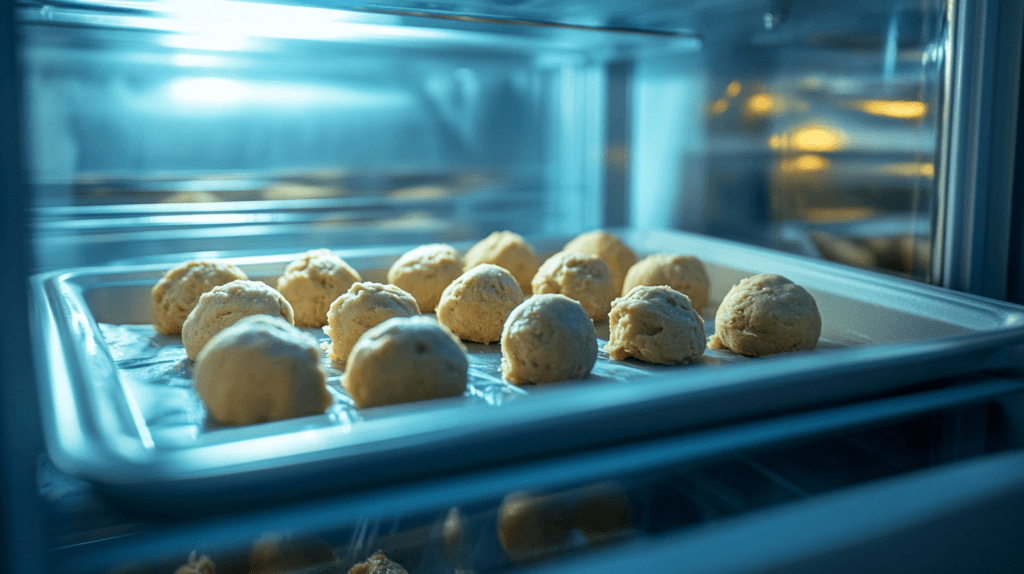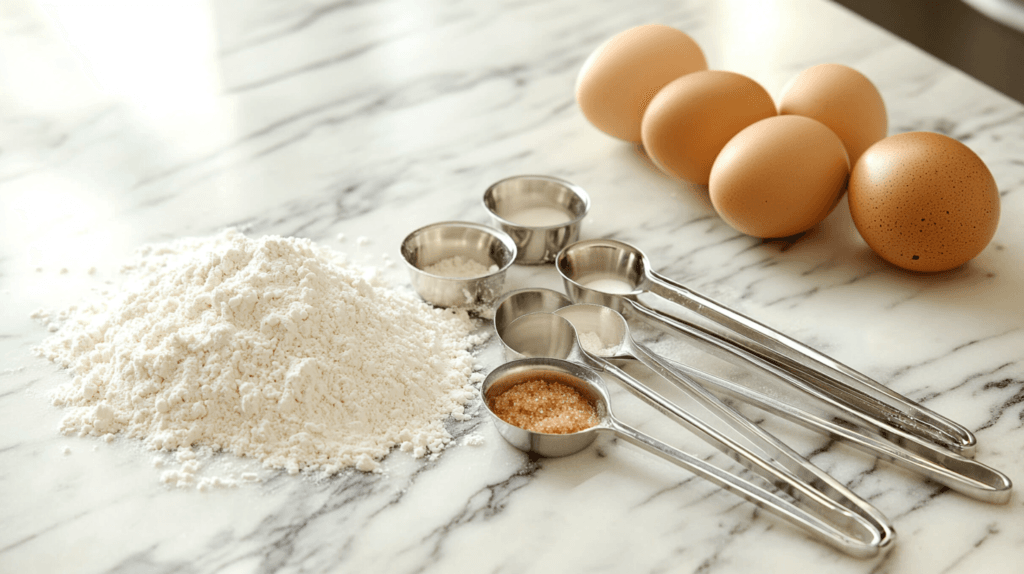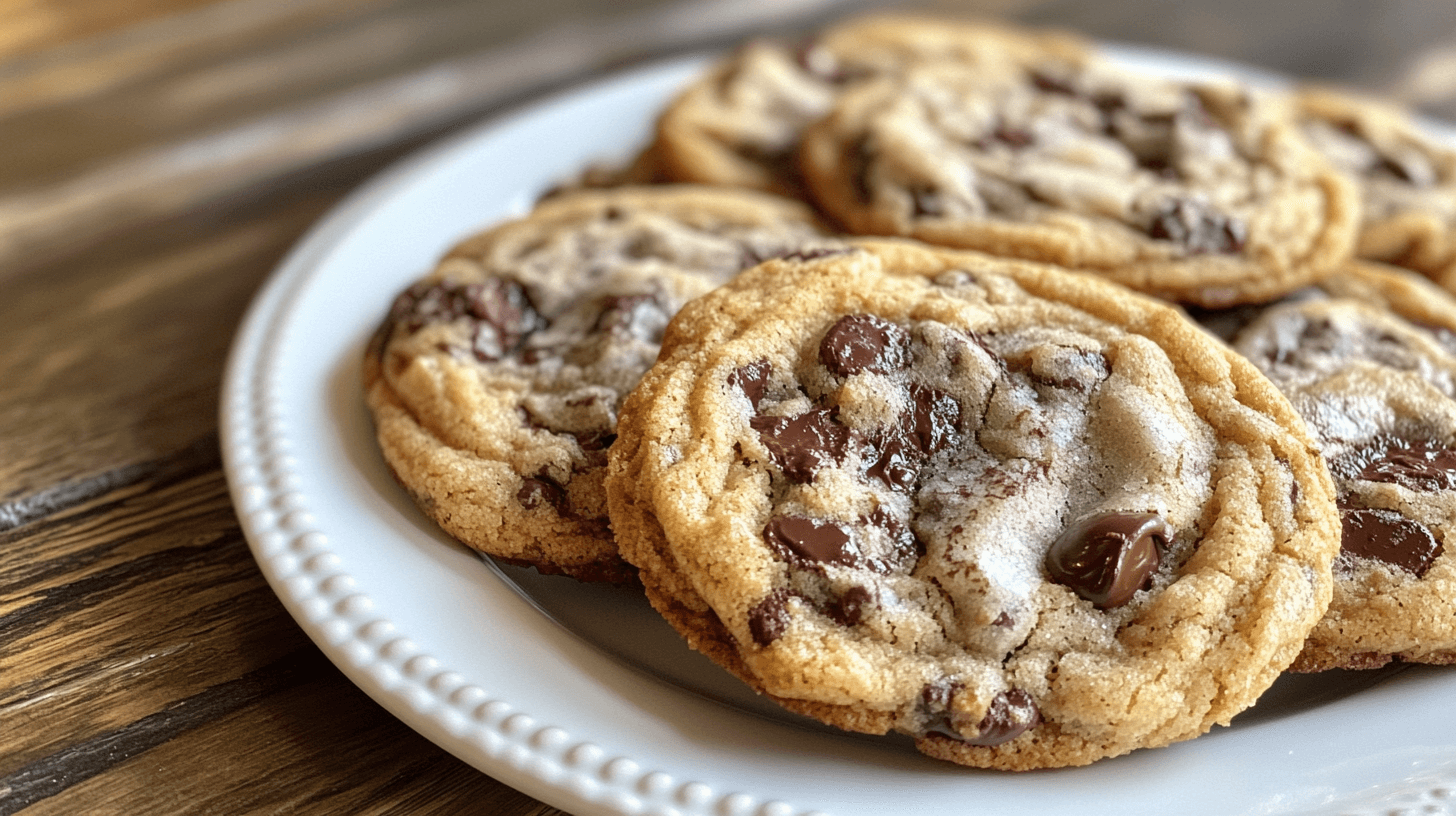A perfect cookie can transport you back to a moment of warmth and joy. Among the most loved types are chewy and soft cookies, prized for their moist centers and melt-in-your-mouth texture. But what’s the secret behind this delightful consistency? Unlike crispy cookies, where crunch is key, chewy cookies focus on moisture retention, ingredient balance, and precise baking techniques. This article delves into the science, ingredients, and methods that contribute to creating cookies that are irresistibly soft and chewy.
Table of Contents
The Science Behind Soft and Chewy Cookies
Creating chewy and soft cookies is as much an art as it is a science. The texture of a cookie depends on how ingredients interact with each other and how they’re treated during baking. To master the technique, understanding these key factors is essential:
Moisture Content – The Secret to Chewy Cookies
The moisture content of a cookie is the most critical factor in determining its chewiness. Ingredients like butter, eggs, and brown sugar contribute significantly to moisture. When combined in the right proportions, these ingredients ensure the cookie retains water even after baking, creating a soft and pliable texture.
- Brown Sugar vs. White Sugar: Brown sugar contains molasses, which adds moisture to the dough. Using more brown sugar than white sugar results in softer cookies with a deeper flavor.
- Egg Yolks: Egg yolks are rich in fats, adding tenderness and richness to the cookie.

Gluten Formation – Keeping Cookies Soft
Gluten, the protein found in wheat flour, gives cookies their structure. The type of flour you use and how you mix the dough influence the gluten’s behavior:
- All-Purpose Flour: A moderate gluten content makes it versatile for cookies.
- Overmixing: Excessive mixing activates too much gluten, leading to tougher cookies. Gentle mixing ensures a softer texture.
Temperature Control – Influencing Spread and Thickness
Temperature plays a vital role in determining how a cookie spreads and bakes:
- Chilled Dough: Cooling the dough before baking solidifies the fat, slowing spread and making thicker cookies.
- Oven Temperature: Baking at a slightly lower temperature (around 325°F to 350°F) allows cookies to cook evenly, keeping the centers moist and chewy.
Key Ingredients for Soft and Chewy Cookies
Every ingredient in a cookie recipe has a specific purpose. Adjusting their quantities or types can make a significant difference in the texture.
Using the Right Flour for Chewy Cookies
The type and amount of flour used can make or break the texture :
- More Flour: Creates structure and helps cookies hold their shape, making them thicker and chewier.
- Less Flour: Leads to a more spread-out and crisp cookie.
Fats and Their Role in Moist Cookies
Fats add richness and moisture, but their type can change the outcome:
- Butter: Adds flavor and moisture but can make cookies flatter.
- Shortening: Lacks the flavor of butter but keeps cookies thicker and softer.
- Oil: produces moist cookies but changes the texture to be slightly more crumbly.
Sugars – Sweetness and Texture
Sugar doesn’t just sweeten cookies; it also influences texture:
- Granulated sugar: encourages spreading and creates crispier edges.
- Brown sugar: retains moisture for a chewy texture and adds a hint of caramel flavor.
Techniques to Achieve Soft and Chewy Cookies
Mastering the art of making soft and chewy cookies goes beyond choosing the right ingredients it’s also about perfecting your technique. These methods ensure you get that delightful texture every time:
Proper Mixing – The Key to Consistency
The way you mix the cookie dough directly impacts its texture. Here’s how to do it right:
- Creaming Butter and Sugar: Beat the butter and sugar together until light and fluffy. This step aerates the dough, leading to a soft texture.
- Mixing Wet and Dry Ingredients: Combine the wet and dry ingredients gently. Overmixing can develop too much gluten, making the cookies tougher.
- Adding Chocolate Chips or Mix-Ins Last: Gently fold in chocolate chips, nuts, or other additions to avoid overworking the dough.
Why Chilling Your Dough is Essential for Soft Cookies

Chilling the dough is a simple yet crucial step for achieving thick, chewy cookies. It solidifies the fat, slowing the spread during baking. For best results:
- Short Chill: Refrigerate for at least 30 minutes for a slight improvement.
- Overnight Chill: Refrigerating the dough for 12-24 hours allows flavors to meld and enhances the texture.
Shaping for Even Results
The size and shape of your cookie dough balls also influence the texture:
- Larger Portions: Use a generous scoop of dough for thicker, softer centers.
- Uniform Size: Ensure all dough balls are the same size for even baking.
Baking Time and Temperature
The baking process is where everything comes together. Timing and temperature are critical:
- Underbaking Slightly: Remove the cookies from the oven when the edges are set, but the centers are slightly undercooked. They will continue to cook on the baking sheet as they cool.
- Monitoring Closely: Set a timer and check cookies frequently in the last few minutes to prevent overbaking.
Ingredient Ratios and Substitutions
Understanding ingredient ratios can help you adjust recipes to fit your preferences for soft and chewy cookies.
Adjusting Ratios for Texture
Small changes in ingredient proportions can have a big impact:
- Higher Fat Content: Increase butter or add an extra egg yolk for a softer texture.
- More Brown Sugar: Replace some of the white sugar with brown sugar to enhance moisture.
- Less Baking Time: Slightly reducing the baking time keeps cookies soft.
Substituting Ingredients for Softness
If you’re missing an ingredient, here are some swaps that won’t compromise chewiness:
- Butter Substitutes: Use margarine or shortening for similar results.
- Egg Alternatives: For eggless cookies, use mashed bananas, applesauce, or yogurt.
- Gluten-Free Flour: Opt for almond flour or a gluten-free blend for soft, chewy cookies without gluten.

Fixing Common Issues with Soft and Chewy Cookies
Even with the best ingredients and techniques, mistakes in the kitchen can sabotage your efforts to make soft and chewy cookies. Here’s how to sidestep common pitfalls and fix any issues that arise:
Overbaking – The Most Common Culprit
Cookies can quickly go from soft and chewy to dry and brittle if left in the oven for too long. Avoid these errors:
- Not Watching the Timer: Always set a timer and monitor the cookies closely during the last few minutes.
- Baking Too Long: Cookies often look slightly underbaked when they are done. Remove them when the edges are set but the centers are still soft.
- Residual Heat: Remember that cookies continue to cook as they cool on the baking sheet. Transfer them to a cooling rack after a few minutes.
Skipping Dough Chilling
Skipping the chilling step can result in cookies that spread too much and lose their soft, thick texture:
- Flat Cookies: Dough that’s too warm will melt quickly in the oven, making the cookies thin and crispy.
- Fix It: Chill the dough for at least 30 minutes before baking, or shape the cookies and freeze them briefly before baking.
Mismanaging Ingredient Ratios
Using the wrong proportions of ingredients can negatively affect the texture:
- Too Much Flour: Over-measuring flour makes cookies dense and dry.
- Not Enough Sugar: Sugar not only sweetens but also adds moisture and helps cookies spread properly.
- Fix It: Measure ingredients accurately using a kitchen scale or the scoop-and-level method.
Incorrect Oven Temperature
Even minor variations in oven temperature can impact cookie texture:
- Too Hot: Cookies may brown too quickly on the edges, leaving the centers underbaked.
- Too Cool: Cookies may spread too much, becoming thin and crispy.
- Fix It: Use an oven thermometer to ensure accurate baking temperatures.
Overmixing the Dough
Mixing dough excessively activates gluten, resulting in tough, dense cookies:
- The Mistake: Mixing too vigorously or for too long after adding the dry ingredients.
- The Fix: Mix the dough just until the ingredients are combined.
If you’re looking to dive deeper into the specifics of cookie-making, check out our Soft Chocolate Chip Cookies – Easy Recipe for Chewy Treats for a detailed step-by-step guide. For more insights into the science behind cookie textures, explore What is the Secret to Making Soft Cookies?. Or, if you’re a fan of classic recipes, try the Nestle Cookie Recipe – Perfectly Soft & Chewy Cookies for another delicious option.
FAQs
Why Are My Cookies Hard Instead of Soft?
Cookies become hard when they’re overbaked, contain too much flour, or lack sufficient moisture. To prevent this, reduce baking time, use more brown sugar, or add an extra egg yolk for moisture.
How Do I Make My Cookies Chewier?
For chewier cookies, use brown sugar instead of granulated sugar, add an extra egg yolk, and chill the dough before baking. Reducing baking time slightly also helps maintain a chewy texture.
Can I Freeze Cookie Dough?
Yes, cookie dough can be frozen for up to three months. Scoop the dough into individual portions, freeze them on a tray until firm, then transfer to an airtight container. Bake directly from frozen, adding 1-2 minutes to the baking time.
What Role Does Butter Play in Cookie Texture?
Butter contributes to flavor, moisture, and spread. It makes cookies softer but can also cause them to spread more, especially if melted or not properly chilled.
Is It Better to Use Room-Temperature Ingredients?
Yes, room-temperature butter, eggs, and other ingredients mix more evenly, leading to a consistent dough and better cookie texture.
Why Did My Cookies Spread Too Much?
Cookies spread excessively when the dough is too warm, the baking sheet is too hot, or there’s insufficient flour in the recipe. Chill the dough and ensure your baking sheets are cool before reusing.
Conclusion
Soft and chewy cookies are a beloved treat, and achieving the perfect texture requires a blend of science, technique, and care. By understanding the role of key ingredients like brown sugar, butter, and eggs, and by mastering methods such as proper mixing, chilling the dough, and carefully timing the bake, you can consistently create cookies that delight every bite. Avoid common mistakes like overbaking and incorrect measurements, and don’t be afraid to experiment with ingredient ratios or substitutions to customize your cookies to your taste. With practice and attention to detail, you’ll be baking irresistibly soft and chewy cookies every time.

Soft and Chewy Cookies
Equipment
- Mixing Bowls: 1 large, 1 medium
- Measuring cups/spoons
- Hand Mixer or Stand Mixer
- Rubber Spatula
- Baking sheets
- Parchment paper or silicone baking mats
- Cooling rack
Ingredients
- Dry Ingredients:
- 2 1/4 cups all-purpose flour sifted
- 1/2 teaspoon baking soda
- 1/2 teaspoon salt
- Wet Ingredients:
- 3/4 cup unsalted butter melted and slightly cooled
- 1 cup packed light brown sugar
- 1/2 cup granulated sugar
- 1 tablespoon vanilla extract
- 1 large egg plus 1 egg yolk all at room temperature
- Mix-Ins:
- 2 cups semisweet chocolate chips or a blend of semisweet and dark chocolate chips
- Optional: 1 cup chopped walnuts or pecans
Instructions
- Preheat & Prep:
- Preheat your oven to 325°F (163°C). Line baking sheets with parchment paper or silicone mats.
- Combine Dry Ingredients:
- In a medium bowl, whisk together the sifted flour, baking soda, and salt. Set aside.
- Mix Wet Ingredients:
- In a large bowl, combine the melted butter, brown sugar, and granulated sugar. Beat with your mixer until the mixture is smooth and fully incorporated.
- Add the vanilla extract, egg, and extra egg yolk. Continue to beat until the mixture is light and creamy.
- Incorporate Dry Ingredients:
- Gradually add the dry ingredients to the wet mixture, stirring gently with a spatula or on low speed. Mix just until combined—avoid overmixing to keep the cookies tender.
- Fold in Chocolate Chips:
- Gently fold in the chocolate chips (and nuts, if using) until evenly distributed.
- Scoop Dough:
- Using a tablespoon or a small cookie scoop, drop rounded portions of dough onto the prepared baking sheets. Leave about 2 inches of space between each cookie to allow for spreading.
- Bake:
- Bake in the preheated oven for 10–12 minutes. The edges should turn a light golden color while the centers remain soft and slightly underdone for extra chewiness.
- Cool:
- Remove the cookies from the oven and let them cool on the baking sheet for about 5 minutes. Transfer to a cooling rack to cool completely.
- Details
- Prep Time: 15 minutes
- Cook Time: 10–12 minutes
- Total Time: Approximately 30 minutes
- Yield: About 24 cookies
- Category: Dessert / Cookie
- Method: Baking
- Cuisine: American
- Diet: Vegetarian
- Keywords
- soft, chewy, cookies, chocolate chip, dessert, easy, classic, homemade, comfort food, American
- Nutrition (Per Cookie – Approximate)
- Serving Size: 1 cookie (≈40g)
- Calories: 210
- Sugar: 14g
- Sodium: 130mg
- Fat: 11g
- Saturated Fat: 6g
- Unsaturated Fat: 5g
- Trans Fat: 0g
- Carbohydrates: 26g
- Fiber: 1g
- Protein: 3g
- Cholesterol: 30mg
- Note: Nutritional values are approximate and may vary based on specific ingredients and portion sizes.
Notes
Avoid Overbaking: The cookies may seem slightly underdone when you take them out; they’ll firm up as they cool.
Flavor Variations: Feel free to experiment with different mix-ins such as white chocolate chips, dried cranberries, or shredded coconut.
Ingredient Temperature: Ensure eggs and butter are at room temperature to help the dough come together smoothly.
Storage: Keep cookies in an airtight container at room temperature for up to one week. They can also be frozen for longer storage.
